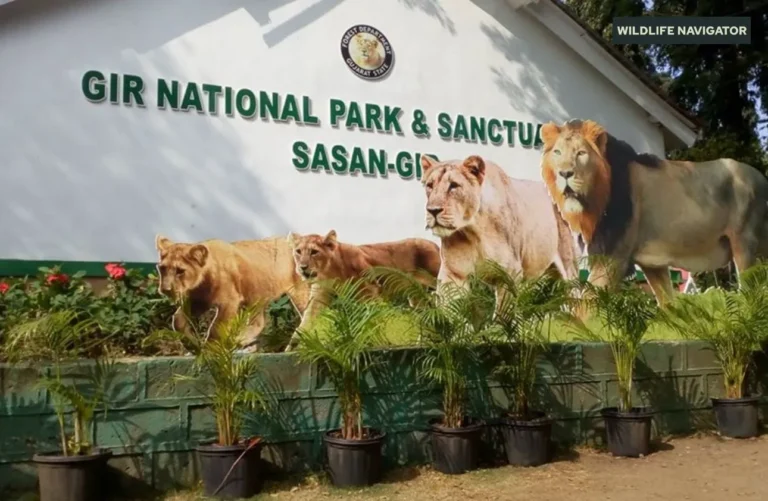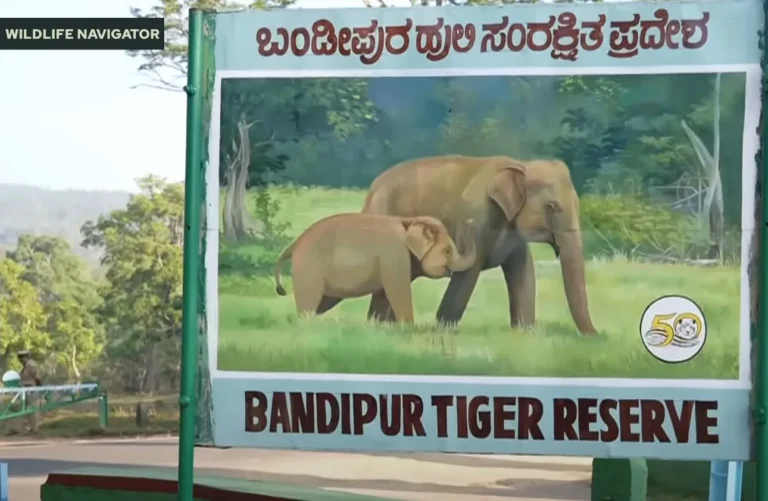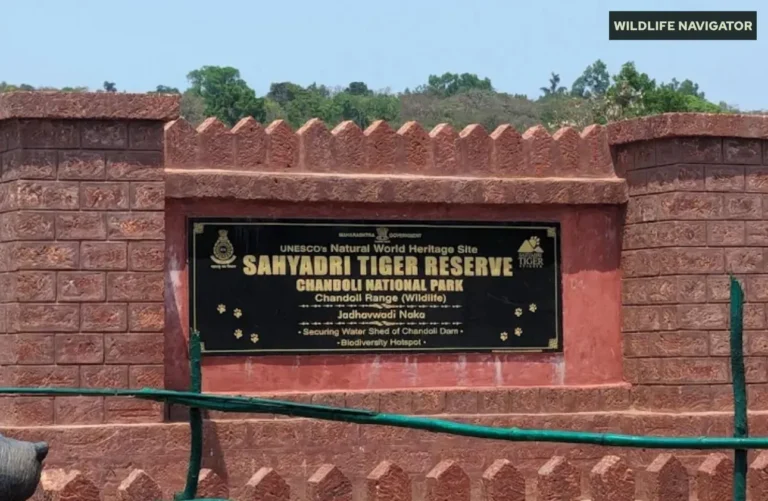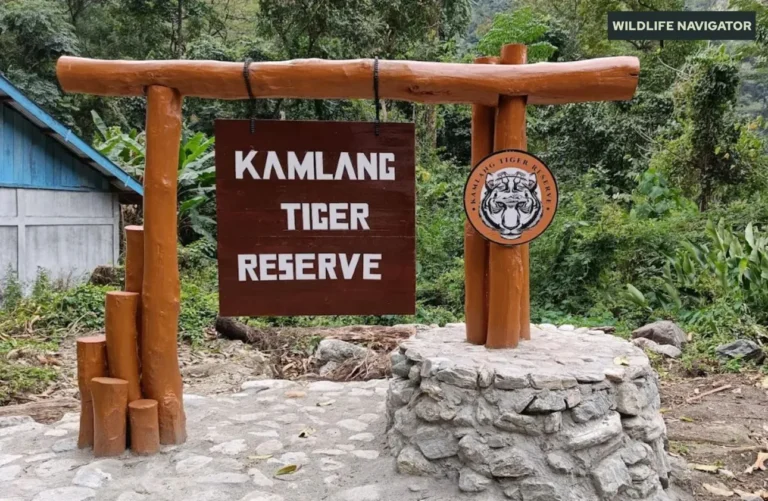Dholpur Karauli Tiger Reserve: Rajasthan’s Lesser Known Tiger Paradise
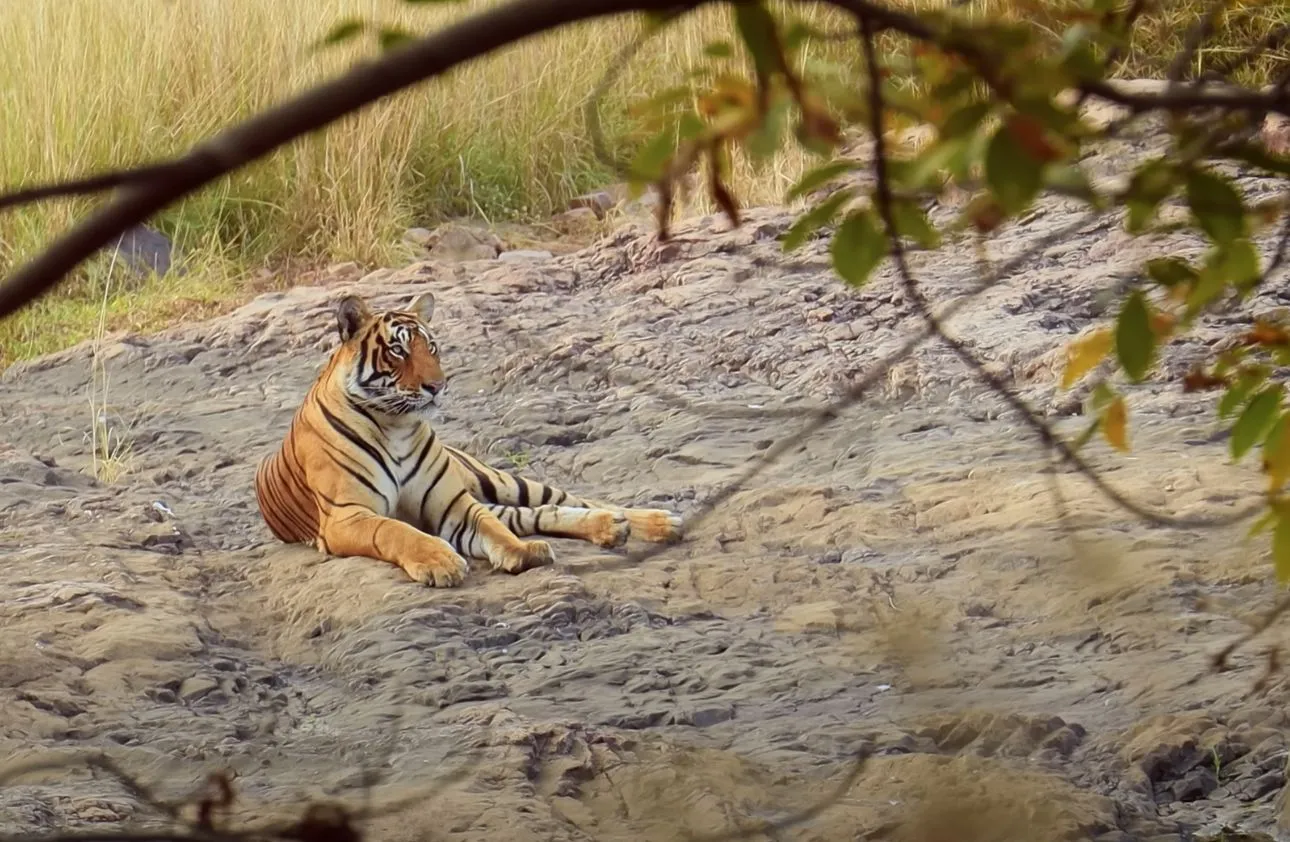
Dholpur Karauli Tiger Reserve is one of Rajasthan’s most promising wildlife destinations, established to strengthen tiger conservation and biodiversity in the state. Spread across the districts of Dholpur and Karauli, this reserve brings together a unique blend of dense forests, rugged hills, and riverine landscapes that provide ideal habitats for big cats and other wildlife species.
Situated close to the Chambal River and bordered by the historical towns of Dholpur and Karauli, the reserve offers a distinct experience that combines nature, wildlife, and heritage. It plays a vital role under Project Tiger, expanding the network of protected areas in northern India.
Travellers visiting the reserve are greeted by diverse flora and fauna, including the elusive tiger, leopards, and several herbivores, along with rich birdlife. With its developing safari routes and conservation initiatives, Dholpur Karauli Tiger Reserve is emerging as a new hotspot for eco-tourism and wildlife exploration in Rajasthan.
History and Establishment
The Dholpur Karauli Tiger Reserve was officially declared in 2023, becoming Rajasthan’s fifth tiger reserve after Ranthambhore, Sariska, Mukundra Hills, and Ramgarh Vishdhari. This declaration marked a significant milestone for wildlife conservation in eastern Rajasthan, an area long recognised for its ecological richness but lacking formal protection under Project Tiger.
The reserve covers forest areas from both Dholpur and Karauli districts, which were earlier part of the Dholpur Wildlife Sanctuary and Karauli Wildlife Sanctuary. The region’s natural corridors connect to Ranthambhore Tiger Reserve, providing safe passage for tigers and other large mammals. This connectivity was one of the main reasons the area was chosen for upgradation to a tiger reserve.
Historically, the region has deep roots in Rajasthan’s royal hunting heritage. The dense forests and riverine tracts once served as popular hunting grounds for local rulers, especially during the princely era. Over time, these forests evolved into vital ecosystems supporting numerous wildlife species.
The establishment of the Dholpur Karauli Tiger Reserve under the National Tiger Conservation Authority (NTCA) reflects a national effort to restore and expand tiger habitats. It not only protects the tiger population but also ensures long-term ecological balance, sustainable tourism, and livelihood opportunities for local communities.
Geography and Area
Location and Boundaries
The Dholpur Karauli Tiger Reserve is located in the eastern part of Rajasthan, spanning across the Dholpur and Karauli districts. It shares ecological continuity with the Ranthambhore Tiger Reserve to the west and lies close to the Chambal River on the east, which serves as a natural boundary and water source for the region. Its strategic position strengthens the tiger corridor between Rajasthan and Madhya Pradesh, enabling genetic exchange among tiger populations.
Total Area and Landscape
The reserve covers an approximate area of 1,111 square kilometres, including both core and buffer zones. The terrain is characterised by undulating plateaus, rugged hills, ravines, and dry deciduous forests, typical of the Aravalli and Vindhyan ranges. Seasonal streams and small water bodies enrich the reserve, supporting diverse flora and fauna throughout the year.
Climate and Vegetation Zones
The region experiences a semi-arid climate, with hot summers, a moderate monsoon, and cool winters.
- Summer (March–June): Temperatures can reach up to 45°C, making safaris challenging.
- Monsoon (July–September): Brings moderate rainfall, rejuvenating vegetation and water sources.
- Winter (October–February): Pleasant weather ideal for wildlife viewing and photography.
The vegetation primarily consists of dry deciduous forests, interspersed with grassy patches, thorny shrubs, and riverine belts. These varied landscapes provide shelter and feeding grounds for herbivores and carnivores alike.
The combination of hilly terrains, river valleys, and forested plains makes Dholpur Karauli a biologically rich and visually stunning landscape, perfectly suited for both wildlife conservation and eco-tourism.
Flora and Fauna
Flora: Vegetation and Forest Types
Dholpur Karauli Tiger Reserve boasts a landscape dominated by dry deciduous and tropical thorn forests, typical of eastern Rajasthan’s ecology. The reserve’s vegetation varies from dense forests in the hilly zones to open grasslands and scrub patches in the lower areas.
Some of the common tree species found here include:
- Dhok (Anogeissus pendula) – the dominant tree species across much of the reserve.
- Khair (Acacia catechu)
- Tendu (Diospyros melanoxylon)
- Ber (Ziziphus mauritiana)
- Babool (Acacia nilotica)
- Salar (Boswellia serrata)
- Palash (Butea monosperma), known for its striking orange-red blossoms.
The reserve also supports grass species and shrubs that form the base of the food chain for herbivores. The mixture of dense tree cover, rocky patches, and water sources provides a balanced habitat for both predators and prey.
Fauna: Wildlife Diversity
The Dholpur Karauli Tiger Reserve is home to a rich variety of fauna, including apex predators, herbivores, and avian species.
Major Mammals
- Tiger (Panthera tigris) – The flagship species of the reserve, with tigers occasionally moving in from neighbouring Ranthambhore.
- Leopard (Panthera pardus) – Commonly seen across rocky hills and scrub forests.
- Sloth Bear, Indian Wolf, and Striped Hyena are also recorded in the area.
- Herbivores: Spotted Deer, Sambar, Nilgai (Blue Bull), Chinkara, and Wild Boar.
- Small Mammals: Indian Hare, Porcupine, and Jungle Cat.
Birdlife
The reserve’s proximity to the Chambal River makes it a paradise for birdwatchers. More than 250 species of birds have been documented, including:
- Indian Peafowl
- Grey Francolin
- Red-wattled Lapwing
- Painted Stork
- Indian Roller
- Black Drongo
- Raptors like Crested Serpent Eagle and Shikra.
Reptiles and Amphibians
The region’s rocky terrain and water channels provide habitats for several reptiles such as Monitor Lizards, Indian Cobra, Russell’s Viper, and Crocodiles near the Chambal basin.
Biodiversity Importance
The blend of grasslands, riverine forests, and rocky outcrops creates a mosaic habitat essential for ecological balance. This biodiversity not only sustains the tiger population but also supports migratory birds and smaller carnivores, making Dholpur Karauli a vital conservation zone in Rajasthan’s wildlife network.
Best Time to Visit
The ideal time to visit Dholpur Karauli Tiger Reserve is during the winter and early summer months, when the weather is pleasant and wildlife activity is at its peak. The reserve remains open for visitors for most of the year, but certain months provide the best opportunities for safaris and photography.
Seasonal Breakdown
Winter (October to February)
This is considered the best season to explore the reserve. The temperature ranges between 10°C and 25°C, offering comfortable conditions for safaris. During this period, tigers and other animals are more active during the day, and the landscape appears lush after the monsoon rains. It’s also the best time for birdwatching, as migratory birds visit the region.
Summer (March to June)
Summers are hot and dry, with temperatures often crossing 40°C. However, this is when wildlife sightings, especially of tigers and leopards, become more frequent near waterholes. Early morning and late evening safaris are ideal during this period. Visitors should carry light cotton clothing, hats, and sufficient water.
Monsoon (July to September)
The monsoon season brings moderate rainfall, refreshing the vegetation and filling rivers and streams. While it rejuvenates the ecosystem, safari activities may be limited due to slippery terrain and restricted vehicle movement. It’s a good time for nature lovers who wish to experience the reserve’s scenic beauty rather than focus solely on wildlife sightings.
Overall Recommendation
- Best time for wildlife sightings: November to April
- Best time for photography and birdwatching: December to February
- Avoid: Peak monsoon months (July–September) due to limited accessibility
Visiting during the cooler months ensures a comfortable safari experience and a higher chance of encountering the reserve’s incredible wildlife.
Safari Experience and Entry Points
Safari Overview
The safari experience at Dholpur Karauli Tiger Reserve is gradually developing but promises to be one of Rajasthan’s most rewarding wildlife adventures. The reserve offers a mix of jeep safaris, canter rides, and guided nature trails through scenic forest tracts, rocky hills, and grasslands where tigers and leopards roam freely. Safaris are regulated by the Forest Department of Rajasthan, ensuring safety and sustainability while maintaining minimal disturbance to wildlife habitats.
Types of Safaris Available
- Jeep Safari: The most preferred option for wildlife enthusiasts, accommodating up to six visitors. It allows flexible routes and better chances of spotting big cats and other animals.
- Canter Safari: Suitable for larger groups of visitors (up to 20 people), offering an affordable and social safari experience.
- Nature Walks and Birding Trails: In select buffer zones and near the Chambal riverbanks, these guided walks provide close encounters with birdlife and smaller mammals.
Safari Timings
Safaris usually operate twice a day:
- Morning Safari: 6:30 AM – 10:00 AM
- Evening Safari: 3:00 PM – 6:00 PM
(Exact timings may vary seasonally.)
Entry Points and Zones
The main entry points are likely to be developed near Karauli, Dholpur, and Baseri, connecting to the nearest highway routes. The reserve is divided into core and buffer zones, with the core areas being more restricted for tiger movement and the buffer areas allowing guided tourism. The forest department may designate safari routes similar to those in Ranthambhore, ensuring responsible visitor management.
Safari Permits and Booking
Visitors must obtain entry permits either online (through the Rajasthan Forest Department website) or at designated booking counters near the entry gates. Advance booking is recommended, especially during peak seasons (November–April).
Approximate Safari Costs:
- Jeep Safari: ₹2,000–₹3,500 per trip (for 6 persons)
- Canter Safari: ₹600–₹900 per person
- Guide Fee: ₹200–₹400
(Prices may vary based on season and official updates from the forest department.)
Safari Tips for Visitors
- Book safaris at least a week in advance during high season.
- Carry binoculars, camera, and water bottles.
- Follow forest rules strictly—maintain silence, avoid littering, and keep distance from animals.
- Early morning safaris offer better lighting and higher chances of big cat sightings.
A safari through Dholpur Karauli’s rugged terrains and riverine belts offers a raw, authentic experience of Rajasthan’s wilderness — one that’s both thrilling and educational.
Accommodation Options
Where to Stay Near Dholpur Karauli Tiger Reserve
Accommodation around the Dholpur Karauli Tiger Reserve is steadily developing as eco-tourism grows in the region. Visitors can choose from forest rest houses, eco-lodges, heritage stays, and budget hotels depending on their preferences and budget. The main staying hubs are Karauli town and Dholpur city, both offering convenient access to safari zones.
Types of Accommodation
1. Forest Rest Houses and Eco-Lodges
Operated by the Rajasthan Forest Department, these stays are ideal for nature enthusiasts who want to stay close to the reserve. They offer basic amenities and serene surroundings.
- Approx. Cost: ₹1,000 – ₹2,500 per night
- Facilities: Modest rooms, forest views, limited power supply, and meals upon request.
- Ideal For: Travellers seeking quiet stays near nature with an authentic jungle ambience.
2. Heritage and Boutique Resorts
The Karauli Palace and other local havelis offer a blend of Rajasthani heritage and modern comfort. Some of these stays collaborate with conservation programs and provide guided wildlife experiences.
- Approx. Cost: ₹4,000 – ₹8,000 per night
- Facilities: Spacious rooms, traditional décor, in-house dining, jeep safari bookings, and local guides.
- Ideal For: Families and couples looking for comfort with cultural charm.
3. Budget Hotels and Guesthouses
Located mainly in Dholpur town, these are suitable for budget travellers and solo visitors.
- Approx. Cost: ₹800 – ₹2,000 per night
- Facilities: Basic lodging, air-cooled rooms, and easy access to transport.
- Ideal For: Backpackers and day-trip travellers.
Recommended Areas to Stay
- Karauli: Best for proximity to forest areas and heritage attractions.
- Dholpur: Convenient for those arriving by train or road from Agra or Gwalior.
- Baseri and Chambal Belt: Offers a unique mix of wildlife and river-view accommodations.
Booking Tips
- Always book in advance, especially during the winter and festive seasons.
- Prefer eco-certified or government-recognised lodges to support sustainable tourism.
- Confirm safari permit availability before finalising your accommodation.
Staying close to the forest not only enhances the safari experience but also allows visitors to witness the calm and untouched beauty of Rajasthan’s eastern wilderness.
How to Reach
Overview
The Dholpur Karauli Tiger Reserve is well-connected by road and rail to major cities in northern India. Located in eastern Rajasthan, it lies conveniently between Agra, Gwalior, and Jaipur, making it accessible for weekend trips as well as planned wildlife holidays.
By Air
- Nearest Airport – Jaipur International Airport (approx. 180 km)
Jaipur offers excellent connectivity to major Indian cities like Delhi, Mumbai, Kolkata, and Bengaluru. - Alternative Airports:
- Agra Airport (approx. 120 km) – Suitable for travellers from northern India.
- Gwalior Airport (approx. 140 km) – A convenient option for visitors from Madhya Pradesh or Delhi.
From any of these airports, taxis and private cabs can be hired directly to Karauli or Dholpur.
By Train
- Dholpur Junction (DHO) is the nearest railway station, well-linked to Agra, Delhi, Gwalior, and Jaipur.
- Karauli can be reached via Hindaun City Railway Station, located around 35 km from Karauli town.
Regular express and passenger trains connect these towns, making train travel both affordable and convenient.
By Road
- From Jaipur: 180 km (approx. 4.5–5 hours via NH23)
- From Agra: 120 km (approx. 3 hours via NH44 and NH23)
- From Gwalior: 140 km (approx. 3.5 hours via NH44)
- From Delhi: 275 km (approx. 6 hours via Yamuna Expressway and NH44)
State transport buses and private taxis operate regularly between these cities and Dholpur or Karauli. Visitors can also hire self-drive cars or guided tour vehicles for a more flexible journey.
Local Transport and Accessibility
Once in Dholpur or Karauli, local jeeps and forest department vehicles are available to take tourists to safari gates or buffer areas. The roads leading to the reserve are scenic, lined with hills, farmlands, and small villages that showcase the rural beauty of Rajasthan.
Nearby Attractions
Visiting the Dholpur Karauli Tiger Reserve offers an opportunity to explore several cultural, historical, and natural attractions nearby. Combining wildlife exploration with heritage sightseeing can make your trip more enriching.
1. Dholpur Fort
- A majestic fort built during the 11th century, overlooking the Chambal River.
- Known for its red sandstone architecture and panoramic views.
- A short drive from the reserve, ideal for a half-day visit.
2. Machkund Temple
- A revered Hindu temple situated near the Chambal River.
- Popular for spiritual seekers and devotees, offering a peaceful ambiance.
3. Chambal River
- Famous for its ravines, crocodiles, and riverine birds.
- Boating and wildlife photography opportunities along the riverbanks.
4. Kaila Devi Temple (Karauli)
- Located about 20 km from Karauli town, it is a famous pilgrimage site.
- Known for its hilltop location, offering breathtaking views of surrounding landscapes.
5. Raj Mahal, Karauli
- A heritage palace reflecting Rajasthani royal architecture.
- Offers insight into the region’s history and culture.
6. Ranthambhore National Park (Optional Extension)
- About 150 km away, for travellers interested in a larger tiger reserve experience.
- Can be combined with Dholpur Karauli for a wildlife-focused Rajasthan tour.
Tips for Exploring Nearby Attractions
- Plan visits early in the day to avoid heat and crowds.
- Hire local guides for historical and cultural insights.
- Combine heritage visits with safari schedules to maximise your trip.
These nearby attractions make Dholpur Karauli Tiger Reserve not just a wildlife destination but a complete travel experience, blending nature, history, and culture in one trip.
Conservation Efforts and Challenges
Dholpur Karauli Tiger Reserve plays a key role in tiger conservation in eastern Rajasthan. As part of Project Tiger, it protects critical habitats and maintains wildlife corridors connecting nearby reserves like Ranthambhore.
Conservation Efforts:
- Regular patrolling and anti-poaching measures.
- Habitat restoration through tree planting and water source management.
- Community involvement programs to promote eco-tourism and awareness.
Challenges:
- Human-wildlife conflict in surrounding villages.
- Threats from illegal grazing and logging.
- Maintaining genetic diversity with a relatively small tiger population.
Despite these challenges, ongoing efforts aim to ensure long-term survival of tigers and other wildlife while promoting sustainable tourism in the region.
Conclusion
Dholpur Karauli Tiger Reserve is emerging as one of Rajasthan’s most promising wildlife destinations. With its mix of dry deciduous forests, rugged hills, and riverine landscapes, the reserve offers a rare opportunity to see tigers, leopards, and diverse bird species in a relatively unexplored setting.
The combination of safari experiences, heritage attractions, and eco-friendly accommodations makes it an ideal destination for wildlife enthusiasts, photographers, and nature lovers. Responsible tourism and support for conservation initiatives ensure that the reserve continues to thrive, protecting both its tiger population and ecological balance.
A visit to Dholpur Karauli Tiger Reserve is not just a wildlife adventure—it is a journey into the heart of Rajasthan’s wilderness, where nature, history, and culture converge.
